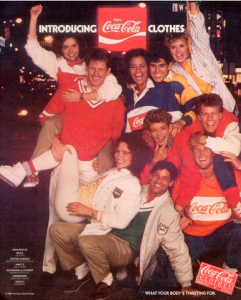“Never miss an episode. Subscribe on Apple Podcasts to get new episodes as they become available.”
Whether you believe that 60% of new product launches fail, or the number is 80% or 95%+, the truth is that successful innovation is rare. Why is this? Read on for my own ideas of the reasons and propositions for some simple solutions.
Last year I wrote a highly popular post on “Improving Ideation, Insight & Innovation: How to Prevent Further Costly Failures.” In it, I spoke about the importance of starting the innovation process with customers. I also mentioned that it should be a virtuous circle rather than the funnel that most organisations still use today.
This time, I want to examine the role of the customer in successful innovation. And why they should actually have a prominent position throughout the process.
Start with the Category rather than (just) the Customer
Every customer-centric organisation should start their processes with a review of the customers they are looking to please. But to do this, the first step to both insight development and successful innovation is to identify the category in which you are, or want to compete. Especially when looking to innovate, it is vital to identify what business you are in.
Now you probably can immediately answer that question but would you be right?
A recent client of mine was looking to launch a juice flavoured soft drink. They naturally (?) thought they would be in competition to juices. When we dug deeper, using our “Home or Away™” decision tool, we found they were actually competing with energy drinks for athletes!
Another practice I use is to zoom in or out when looking at a category, in order to identify new opportunities. Today’s technological world is forcing many organisations to take another look at their complete business models – whether they like it or not!
- Telecoms have become geolocalization data providers to other industries.
- Pharmaceuticals are being forced (?) to move from treating illness to maintaining wellness.
- Food companies are moving into nutraceuticals, concentrating the health benefits of certain foods. (have they really only recently understood that our health comes primarily from the food we eat?!)
- Tobacco companies are reinventing personal pleasure systems with e-cigarettes and other tobacco replacement products. In fact, André Calantzopoulos, Philip Morris International’s CEO recently predicted a “phase-out period” for cigarettes.
- Alcohol providers are turning more and more to lower and non-alcoholic drinks trying to keep up with the interest in wellness. They have understood that whereas drinking is a social behaviour, most people no longer include getting drunk with that sociability.
From these examples, it is clear that most companies could benefit from a re-evaluation of their assumed category, to see whether it has or will change in the near or longer-term future.
Once the category is defined, it becomes much easier to identify the correct customer segment to target. Of course, you still need to get to know them through customer connection sessions. And then complete both a customer persona and journey map for them. (You do have these don’t you?)
Your business is or will change – fast – so don’t depend on your skills alone
One of the problems I see when I first start working with a new client is that they start their innovation process from their strengths, their technical and product skills. While this may deliver quicker introductions, it is more likely to produce renovations and certainly not ground-breaking innovations.
This is such a standard “no-brainer” way of innovating that many companies find themselves out of business as a result.
- Kodak thought it was in the photo business and not in the memory and souvenir business. They consequently lost out to digital, despite having the technology
- Borders thought they were in the print book business rather than the storytelling business. As a result, they lost out to Kindle, despite a late reaction with the launch of Kobo. For now, Barnes & Nobles have managed to join the race with their Nook, but for how long? It will be interesting to see whether Amazon’s quiet expansion of its physical bookstores will support or sound the death knell for other outlets.
- Blockbuster video rental lost their dominance of the home entertainment industry to streaming options like RedBox and Netflix.
These are a few examples of businesses that have changed, leaving the category leaders high and dry with no-one to blame but themselves for their lack of scenario planning. (This won’t happen to you, will it?)
 And what about AI and VR and their impact on TV, gaming, music today?
And what about AI and VR and their impact on TV, gaming, music today?
Speaking of which, look at the graph on the right which shows the incredibly fast change from offline to online music. In less than ten years online passed offline and all but annihilated it!
This is how fast and well prepared all businesses need to be today.
Many industries have been cloned into totally new businesses as a result of technology and new customer priorities.
As already mentioned, Telecom companies now make more money selling geolocalization data than they do selling phones and lines.
So what about some other industries that are being impacted by changes in customer behaviour and preferences?
As just one example of this, Food companies must now adapt to delivering family time, not just ready-made meals. There has therefore been an explosion in meal kits because families want to eat better and even prepare together.
The future of the future
But enough about the past and present, how can you prepare for the future and have successful innovations? What new areas are some of the larger online companies buying into today and why?
Google has gone from Internet-related products and services to hardware such as Pixel smartphones and Google Home, an Amazon Echo-like device. It has also expanded into a multitude of other industries, through partnerships and investments. These include energy, AR (augmented reality), VR (virtual reality) and eye-tracking. It’s clear that they intend to stay up-to-date if not ahead of fast-moving trends and be ready to take advantage of them. Read more on Wikipedia.
Perhaps in preparation, in the last year or so Google has reorganised its various interests into a conglomerate called Alphabet. Google remains the umbrella company for Alphabet’s Internet interests, but this restructuring no doubt announces more to come.
Virgin has gone from airlines, media and entertainment, to travel, health and aerospace. You can read about all their industries and investments on Wikipedia.
Amazon has gone from an online bookstore to the general retail of a vast selection of products. Today it is testing bricks and mortar stores for both books and general groceries. You can again read more about this on Wikipedia.
Facebook started as a social media and networking service. One year ago, its CEO Mark Zuckerberg revealed his ten-year vision, centred around artificial intelligence, global connectivity, VR and AR. Read more on Wikipedia.
Tesla started in the automotive industry but has since moved into energy storage and residential solar panels. Today it is advancing into underground high-speed transport and space travel.
All these examples show the importance of being ready to adapt to fast changes impacting many industries at lightning speed. We no longer have the luxury of time to wait, watch and learn as we once did. Future scenario planning is the only way to be ready for all eventualities and to be able to quickly jump into any new opportunities before our competitors do.
Your next steps to future-proofing your innovation
Some of my clients understand that they are not as well-prepared as they need to be for successful innovation. In my training course I propose many different ideas; here are just a few of them:
#1. Working with new innovation levers
As already mentioned, most organisations start innovating from their past successes and current skills. While this is certainly quick, it is unlikely to lead to successful innovations. Why not challenge yourself to look at your business from a new perspective?
The diagram on the right is a simplified example of the innovation wheel that I use in brainstorming sessions with clients who are tired of thinking within their boxes.
A personally adapted and developed wheel is a powerful tool to get people to think differently about their brand, category or offer. The brand expansion it encourages has seen brands like:
- Gerber and Purina move into insurance.
- Nespresso move into china and chocolate.
- Mars move into ice cream.
- Vicks (P&G) move from various cold remedies into a sleep-aid.
What all these examples have in common is a deep understanding of both their customers and their own brand image.
When one or both of these are missing, you get epic failures like the examples below:
Coca-Cola Clothing: while it may work for sponsorships and promotions, clothing didn’t work for them – this time around?

Zippo perfume for women: Zippos got it spectacularly wrong with this offer on many fronts. Smoking and especially Zippo lighters have very masculine images. Replacing the wonderfully exotic and luxury glass bottles of perfume by this was never going to work!

Colgate frozen food: The only thing that frozen entrees and toothpaste have in common is that after the first you need the second! From that to expecting consumers to make the jump from minty mouths to chicken was just too much!

#2. Zooming out for brands and categories
When you are successful in one category, it can be tempting to extend into others. However, this needs to be done after careful thought. Go too far from the parent brand, as the above examples did and you’ll be doomed to failure. Stay too close and you’ll not benefit from anything more than a mere renovation.

Companies which expand successfully are those that build on their strengths, whether image, position or technical know-how. One example I like to share of a successful innovation using this idea comes from Nespresso’s owner Nestle.
They expanded from capsules for coffee (Nespresso) into capsules for both hot and cold drinks (Dolce Gusto).
Nestle then expanded their systems into BabyNes, a capsule system for bottle feeding.
I can imagine they will be looking to extend their system even further in the future. Perhaps they will consider adding minerals, vitamins and supplements to food and drinks, or targeting specific groups of consumers such as seniors or athletes. It will be interesting to see what comes next.
#3. Zooming into a category niche
It is possible to innovate by zooming in rather than out of the category in which you are in. There are again many examples of this since, in theory at least, it is simpler to do. You already know the category customers and can segment to appeal more strongly to certain groups of them.
Food manufacturers use this strategy a lot. They often extend into low calorie or low fat, and more recently into gluten-free, OMG-free or lactose-free offerings.
Online marketers depend a lot upon finding the right niche for their product or service offer. They have the advantage over bricks-and-mortar stores of collecting a wealth of personalised information. Together with machine learning, they can quickly develop algorithms to precisely target each person with relevant offers. Offline retail will never catch up, however long they collect data – unless they have an online sales strategy too, of course.
Conclusion
So there you have some ideas on how you can improve the frequency of launching successful innovations. Whether working with scenarios, innovation levers, zooming in or out, the one element every strategy has in common is customer understanding. You wouldn’t expect anything less from me, would you? Going forward just remember:
- It’s important to know and understand your customers intimately today but also how they are likely to change tomorrow.
- It’s important to understand the category you really are competing in and what customers think about it.
- It’s important to understand your brand’s image and ensure it’s aligned with any future innovations you consider.
What new ways are you looking to successfully innovate in this fast-paced, constantly changing and challenging world? Please share your ideas and thoughts about the above ideas or add new ones below. Thanks.











